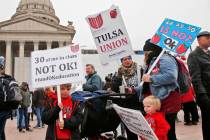‘Securing the City’: New York battles to keep terrorists from blowing up the place
 "When you catch a terrorist and look at the map in his or her pocket, it is always a map of New York; it’s not a map of some other place." — New York Mayor Michael Bloomberg
"When you catch a terrorist and look at the map in his or her pocket, it is always a map of New York; it’s not a map of some other place." — New York Mayor Michael Bloomberg
The Big Apple, it seems, is at the top of the terrorist to-do list. And in New York, as in all American cities, the organization responsible for keeping residents safe from the religious fanatics and other vicious malcontents of the world is the local police department.
"Securing the City: Inside America’s Best Counterterror Force — The NYPD" (2009, Simon & Schuster) profiles the New York City Police Department’s efforts, in the wake of the Sept. 11, 2001, terrorist attacks, to prevent anything like that from ever happening in the city again. Author Christopher Dickey is Newsweek magazine’s Paris bureau chief and Middle East regional editor. He writes regularly about counterterrorism, espionage and the Middle East.
After 9/11, a steely ‘‘never again‘‘ was on the lips of just about every American, from the president on down. But it had special resonance for the officers of the NYPD, who had seen their friends and colleagues die in the twin towers of the World Trade Center, along with hundreds of firefighters and thousands of civilians they were powerless to save.
So the NYPD saw its mission in stark terms: prevent attacks and save lives.
But how to detect terror plots that might originate oversees? How to unravel those plots before they could be carried out? How to find would-be attackers in New York’s stew pot-mix of native-born and immigrant residents? Information was the key, and relying on the various federal law enforcement and intelligence agencies for that information was a nonstarter — they didn’t want to share, when they did divulge information, the process was too slow — and, to be blunt, they hadn’t prevented 9/11.
When you want a job done well, hire the pros, and that’s what New York did, beginning with Bloomberg’s appointment of former commissioner Ray Kelly to return and lead the department. In the weeks after 9/11, Kelly developed a plan for his department to fight terrorism cop by cop on the beat. The department set up its own counterterrorism center. It staffed it with intelligence experts who had worked at federal law enforcement and intelligence agencies, who still had back-channel ties to agencies such as the FBI and the CIA. It sent its own people overseas. When terrorists struck overseas, it sent more people, to investigate, to assist other law enforcement agencies and to learn.
All of that was vital, but at the center of NYPD’s strategy after 9/11 was the cop on the beat, an officer in a neighborhood making acquaintances, talking with people, listening to their concerns, and picking up information.
Imitation being the sincerest form of flattery and a real-life barometer of what works, other cities have modeled their approach to preventing attacks in their jurisdictions on New York City’s.
The plots keep coming, and, so far, get interrupted. Here are some of them, as listed by The Associated Press:
May 2003: A naturalized U.S. citizen from Kashmir living in Columbus, Ohio, is accused of planning to destroy the Brooklyn Bridge, pleads guilty to supporting al-Qaida and is sentenced to 20 years in prison.
August 2004: Two men are arrested on the eve of the Republican National Convention in New York on suspicion of plotting to blow up a subway station. They are sentenced to prison.
July 2006: U.S. authorities announce the arrest of Assem Hammoud, a Lebanese man they claim was plotting to bomb New York City train tunnels to flood the financial district.
June 2007: Four Muslim men are accused of plotting to destroy New York’s Kennedy Airport, kill thousands of people and blow up a jet fuel artery. They have pleaded not guilty.
And, most recently, four men were arrested May 20 on charges they plotted to blow up synagogues in the Bronx and shoot down military aircraft.
Meanwhile, an explosion rocked an Upper East Side Manhattan coffee shop May 25, blowing up a sidewalk bench and breaking windows at a Starbucks. Fortunately, it happened at about 3:30 in the morning. Authorities think the blast might be connected to one at the British consulate in 2005, one at the Mexican Consulate in 2007 and one at a military recruiting station in Times Square in 2008. No one was hurt in any of the blasts, but authorities say any of them could have killed somebody. If they have suspects, they aren’t saying.
Al-Qaida’s threats continue. Dickey’s book is important reading, because it reminds us of the effort required to keep us safe. Moving on from 9/11 is not an option for police and other law enforcement officers. They are on the front lines every day in America’s war on terror. As Dickey makes clear in fascinating detail, in New York City, the war is local.









